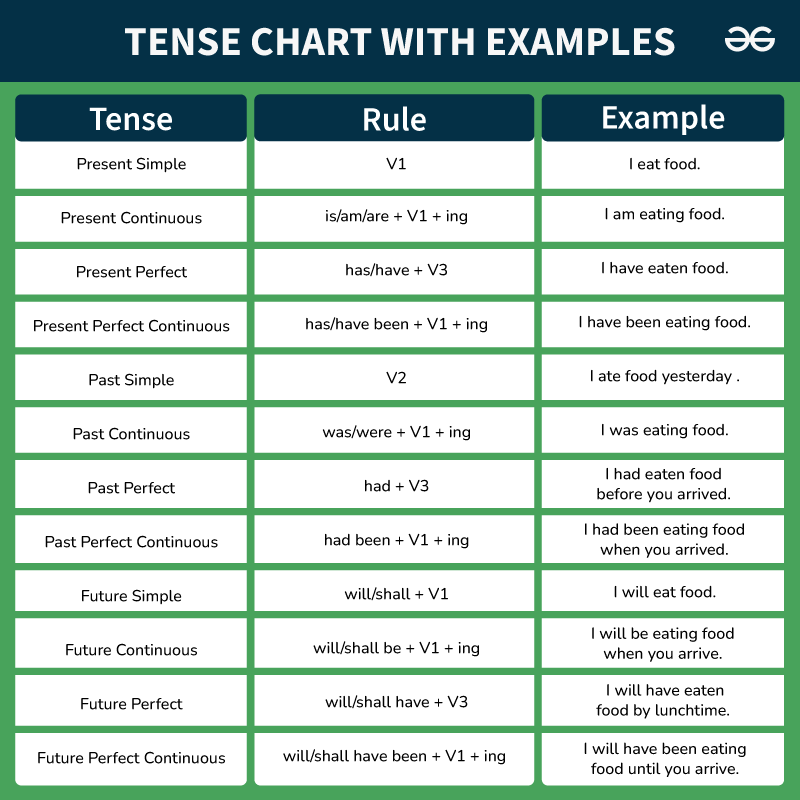English grammar can be a complex subject, especially when it comes to understanding tenses. Tenses are used to indicate the time of an action or event in English. There are various tenses in English, each serving a different purpose and indicating a different time frame. Understanding and mastering tenses is essential for effective communication in English.
Learning English tenses can be challenging for many learners, but having a clear and concise reference chart can be very helpful. A tenses chart can provide an overview of the different tenses, their structures, and their uses, making it easier to grasp the concept of tenses in English.
English Grammar Tenses Chart
There are three main categories of tenses in English: past, present, and future. Each category is further divided into different tenses, each serving a specific purpose. Some of the most commonly used tenses in English include:
- Present Simple
- Present Continuous
- Present Perfect
- Past Simple
- Past Continuous
- Past Perfect
- Future Simple
- Future Continuous
- Future Perfect
Each tense has its own unique structure and usage rules. For example, the present simple tense is used to talk about general truths or habits, while the past perfect tense is used to indicate an action that was completed before another past action. Understanding these rules and structures is crucial for using tenses correctly in English.
Using a tenses chart can help learners visualize and understand the different tenses in English. By referring to a chart, learners can quickly identify the appropriate tense to use in different situations, improving their overall proficiency in English grammar.
Practicing with exercises and examples related to each tense can also enhance understanding and retention. By applying the rules and structures learned from the tenses chart, learners can improve their ability to communicate effectively in English, both in spoken and written form.
In conclusion, mastering English tenses is essential for effective communication in the language. By using a tenses chart as a reference guide, learners can enhance their understanding of the different tenses in English and improve their overall proficiency. With practice and dedication, learners can confidently navigate the complexities of English grammar tenses and communicate more accurately and fluently.
